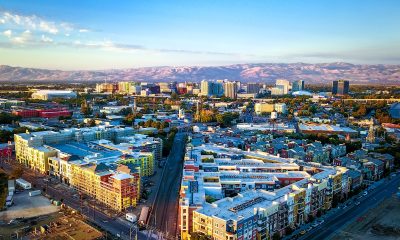Travel
Explore The US: Road Trips Through US National Parks
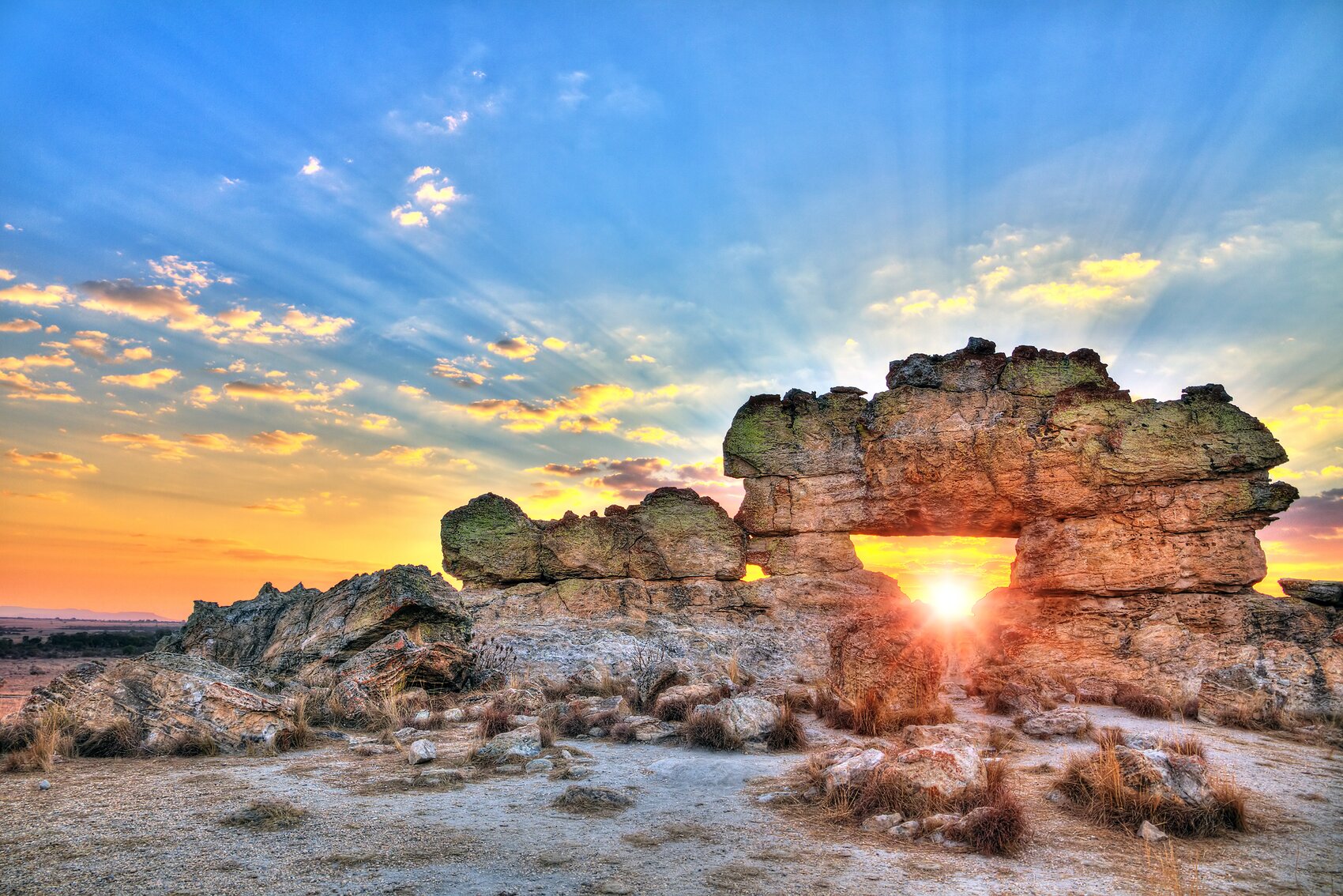
Trekkers and nature lovers should visit the Midwest in spring. Temperatures are warm, national parks aren’t crowded, fees aren’t high, and you can usually get settled and parked easily. Then, take a scenic hike to see nature in bloom, unaffected by the heat.
Like everything else, visiting in April–May (our spring off-season) has drawbacks. Some mountain roads and passes may be closed owing to residual snow at higher elevations, while others may be renovated for summer high season. Nighttime temperatures below freezing at higher elevations and unexpected detours and closures may surprise you.
National Parks in the USA and Their Tourism Infrastructure
Americans cherish and protect nature, but they also let visitors enjoy it. All national parks, state parks, reserves, etc. have excellent tourist infrastructure, making this possible.
Besides Mojave and Death Valley, most parks require entrance tickets. The ticket booth sells this ticket or the popular and recommended Annual Pass upon entering the park. A road barrier separates the ticket office from the park center, often many kilometers away.
Free park maps and tourist booklets with all the information come with the pass.
Hiking trails, visitor centers, museums, parking lots, campgrounds, accommodations, toilets, showers, laundries, shops, shuttle bus networks, and any other tourist services are in the park. Drinking fountains and taps provide free water.
Everything is well-labeled and structured for easy reading. Park employees and rangers can assist.
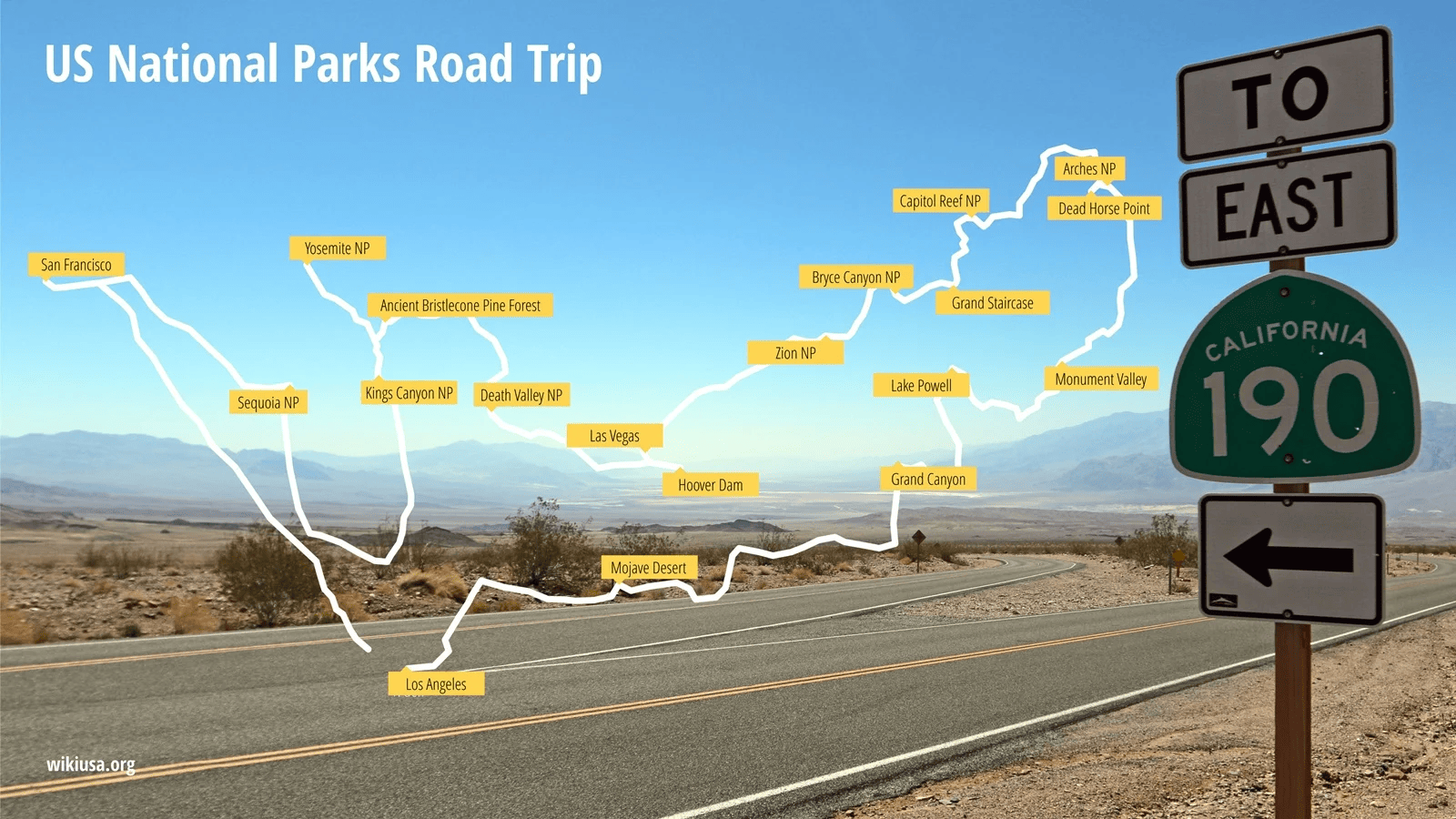
Road Trip through the Midwest USA
Our road trip by RV in late April/May lasted 24 days and covered 3,790 mi on the following itinerary: Los Angeles – Mojave Desert – Grand Canyon – Lake Powell – Monument Valley – Arches – Dead Horse Point – Capitol Reef – Staircase Escalante – Bryce Canyon – Zion Canyon – Las Vegas – Hoover Dam – Death Valley – Ancient Bristlecone Pine Forest – Yosemite – Kings Canyon – Sequoia – San Francisco – Los Angeles.
1. Mojave Desert
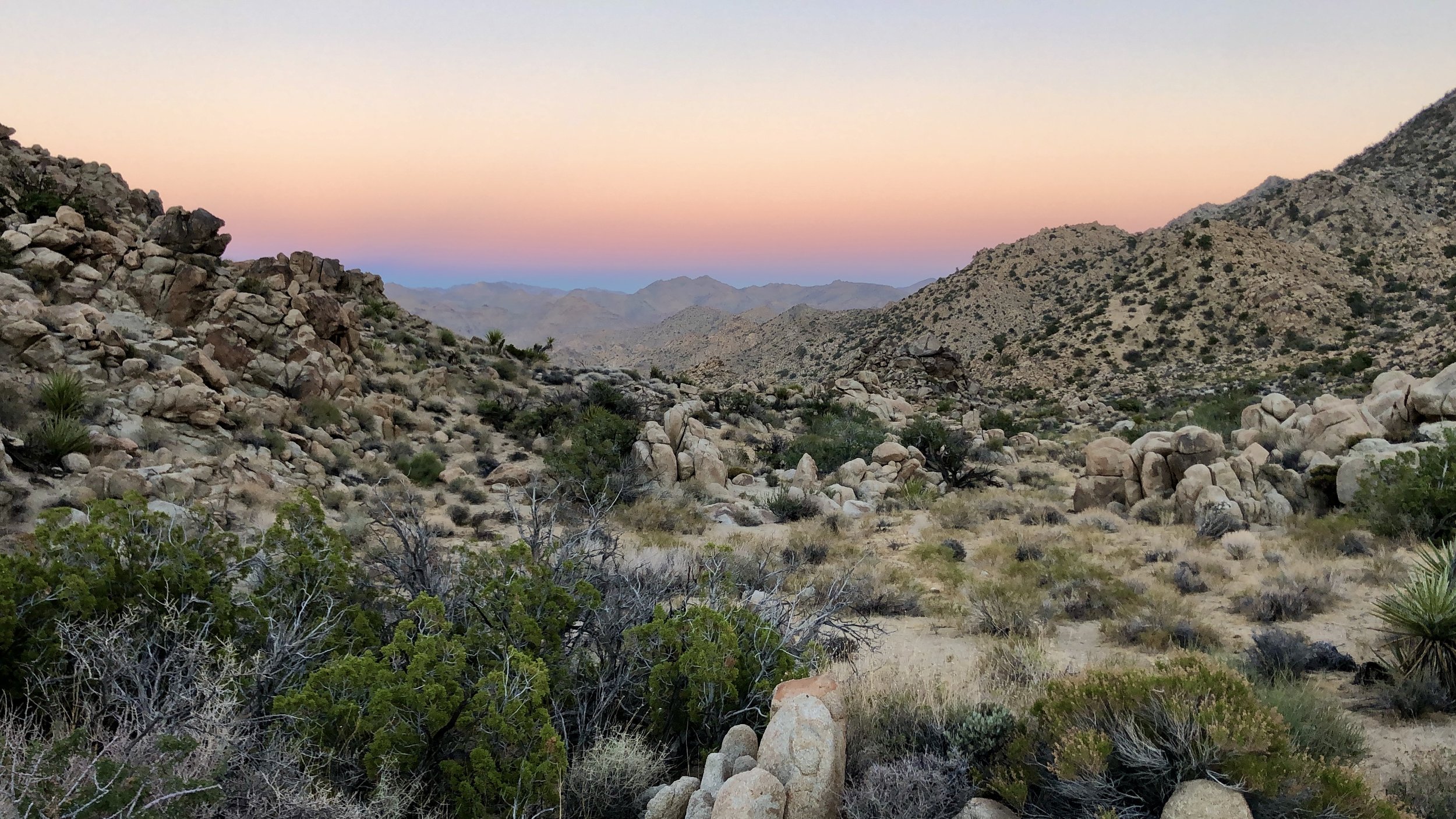
Los Angeles to Mojave Desert is a 5-hour journey. No one pays to enter the huge, empty Mojave Desert.
In spring, yes. All sorts of cacti bloom with brilliant flowers, golden desert rose bushes fragrance the air from afar, and the variety and richness of desert flowers at this time of year is astounding. Birds, chipmunks, hares, insects, reptiles, etc. sing.
You can camp, bike off-road, hike between cliffs, valleys, and dunes practically everywhere without people.
The highest Mojave Desert sand dunes are the 200-metre Kelso Dunes. Kelbaker Road leads to a parking lot and a 3.11-mile walk to their peak. Best to start morning or evening. Not only is it hot throughout the day, but sunrise and sunset above the sand dunes are amazing. Though close, the dunes are high and walking through the sand is difficult. The climb up will take longer than it looks from the parking lot.
2. Bryce Canyon
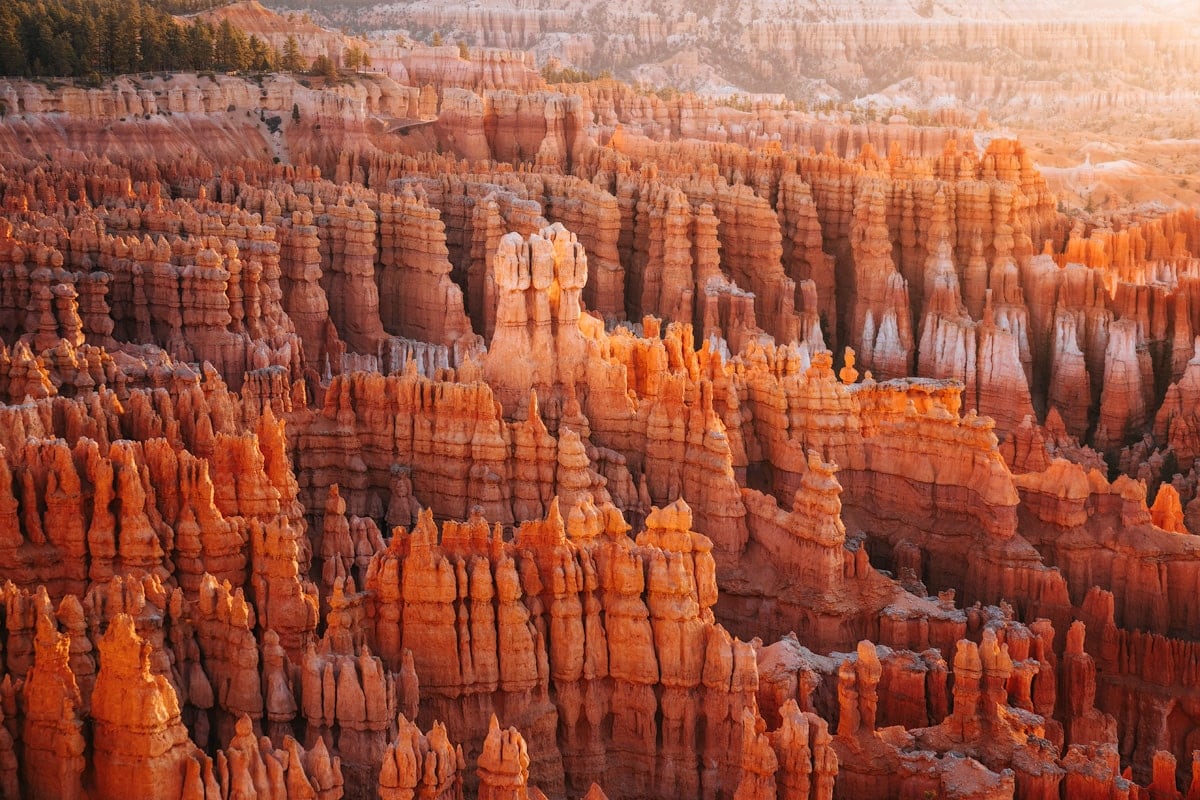
Bryce Canyon is small and 8,530 feet. high. In May, snow remained in some spots, and we were astonished by a 19.40°F morning temperature under a cloudless sky. Still, it’s worth seeing. Our vacation has some of the most stunning vistas.
Hoodoos, red and white limestone rock towers and spires, dot the canyon. This unique environment can be seen from the Rim Trail at its top edge, like the Grand Canyon. A free shuttle bus connects the viewpoints here too.
To miss the canyon view from one of the pathways between the towers would be a shame. We started the Navajo Loop Trail early in the morning (the term “loop” does describe the trail some places). Other pathways include Queens Garden and Peekaboo Loop. No walk is too difficult and all offer stunning views. We hiked alone in the canyon in the morning, but more people arrive later.
3. Grand Canyon – South Rim
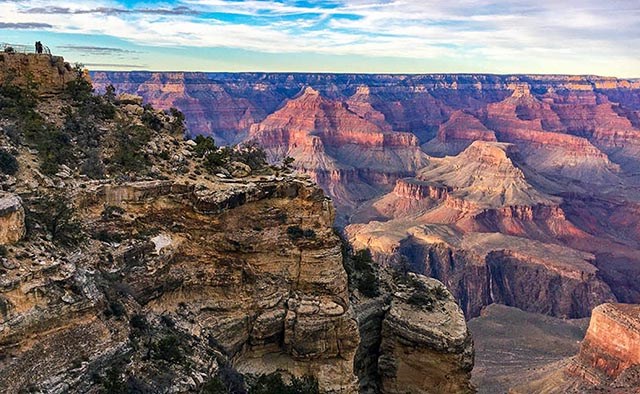
Descripting the awe you feel standing on its rim may be impossible. The Grand Canyon’s beauty may make you cry, and it’s unmatched. This is enhanced by excellent tourist infrastructure and amenities.
The Rim Trail, the most popular, accessible, and iconic trail on the South Rim of the canyon, links several stunning vistas. The disabled, wheelchair users, parents, strollers, etc. can use it. One can hike and view the Grand Canyon all day.
You can use the shuttle bus network (free with national park admission) with three loops to reach remote spots and views. View the Grand Canyon differently here. Get on and off at will, the shuttle runs morning to evening, and the park staff organizes everything well.
Like us, many hiking aficionados are not satisfied with going “only” along the rim. Many famous trails lead to the canyon bottom.
The South Kaibab Trail is the most scenic. From top to bottom, the canyon trail is 7.46 mi and climbs 4,921 ft! It is not advised to do this walk to the bottom and back in one day. Consider descending one day, camping overnight in the base camps, then climbing up the next day. Bring plenty of water, food, and camping gear. As you descend down the canyon, the temperature climbs. Summer temperatures can reach 122°F, causing dehydration and hyperthermia. There have been occurrences involving folks who can go there and back in one day. You must respect the Grand Canyon and not overestimate your ability. The downhill is easy, but the ascent is difficult.
The South Kaibab Trail is a fantastic hike that descends steeply and gradually. Trail is wide enough for mule caravans. Its views differ from the canyon rim and alter as you descend. Restrooms are periodically provided, but there are no snack bars or drinks. As with every Grand Canyon area, the hike, especially at the top, can be congested even in off-season. You should descend at least part of the canyon for a unique experience.
4. Arches National Park
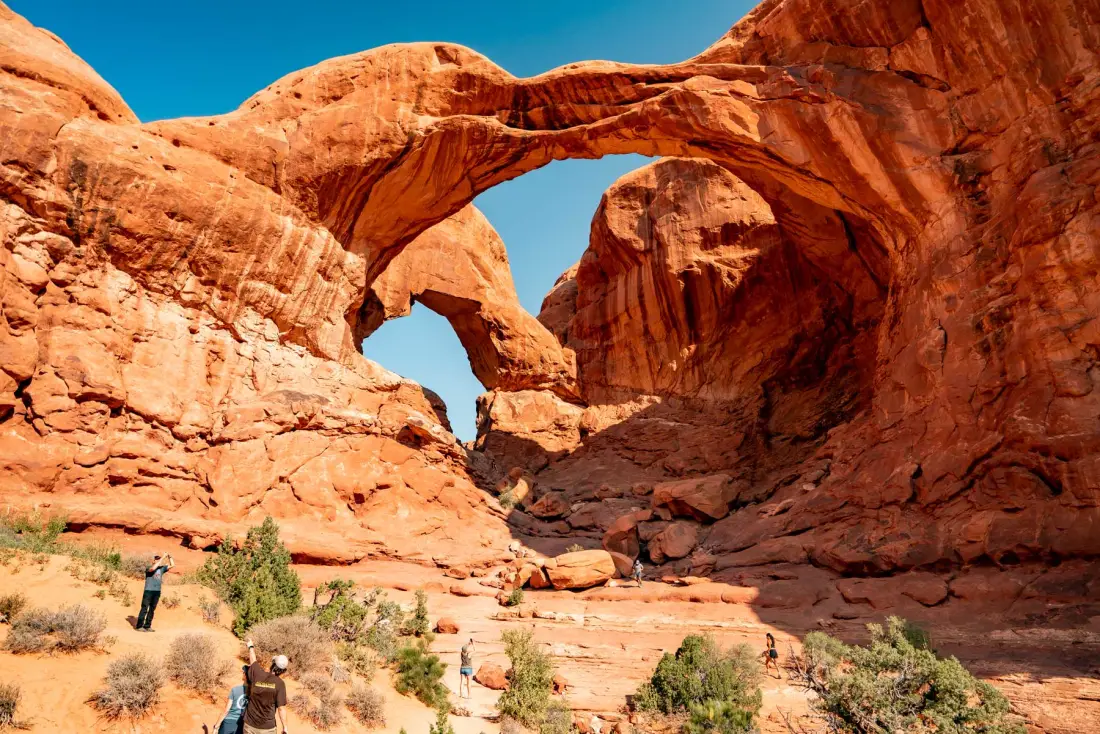
Though small, Utah’s Arches National Park has nearly 2,000 sandstone arches, the most in the world.
The park is popular with tourists, especially off-roaders and outdoor enthusiasts from Moab. Trips to Canyonlands National Park and Dead Horse Point State Park are short from here. Hotel, campsite, restaurant, and outdoor activity options are available in Moab, a pleasant community.
Delicate Arch is the park’s most iconic rock arch. The same-named 3.11-mile trail leads to the arch. The second, shorter trek to the Upper Delicate Arch Viewpoint offers a distant perspective of the Arch, making it unworth the effort.
The trail leads to the campground on the park’s other side. We were especially excited about Devils Garden Trail. This hike offers many chances to see rock arches and formations, including Landscape Arch. From there, the trail gets harder but the red rock formations and surroundings are much better. As usual, the farther you go, the fewer people you meet.
5. Zion National Park

Zion is unique in that its toll access road goes you to the canyon’s bottom, unlike Bryce and the Grand Canyon. You must now park your car in the appropriate spot.
The magnificent canyon road is only accessible by free, eco-friendly shuttle buses for the rest of the trip. Trekking options are available at several bus stops.
These include easier hillside or canyon floor hikes, more dangerous river and water treks (the Narrows Trail), and the famous Angels Landing Trail (2.49 mi). The latter gives adventurous guests a top-down view of the canyon.
This challenging climb from the canyon floor to a 1,476-foot cliff is for the boldest guests. Use safety chains to navigate rock ledges and narrows and ridges. Its suitability for the public is debated after multiple catastrophic accidents. We recommend viewing images and videos online before hiking. Although this walk is not for everyone, especially kids, it draws many travelers. If you don’t have vertigo like me and do it, you’ll have a breathtaking perspective of Zion Park valley.
6. Monument Valley

Monument Valley is majestic like the majestic Canyon. Monument Valley is Navajo land in Utah. You cannot utilize a season pass to enter America’s national parks, such as Annual Pass America The Beautiful, unlike other tourist attractions on Indian reservations. Navajo rules, pricing, and tickets are often exorbitant. This cost $20.00 per car and crew.
Monument Valley in the Navajo National Reserve is a magnificent red desert with 300m-tall sandstone rock pillars. Known from movies, westerns, photo backgrounds, etc., it nevertheless surprises in real life, like Mars.
You can travel between the spectacular rock formations in your own or leased car. The few dozen kilometers of dirt, unpaved picturesque circuit route are off-limits to RVs.
We walked 3.73 mi Wildcat Trail. The easy walk circles many granite blocks in a picturesque desert setting (blooming in spring). The fact that we only met three other “hiking” aficionados throughout the walk added to its attractiveness. Interestingly, most Americans drive whenever possible. We saw a gorgeous young rattlesnake, which was amazing.
7. Yosemite Valley National Park
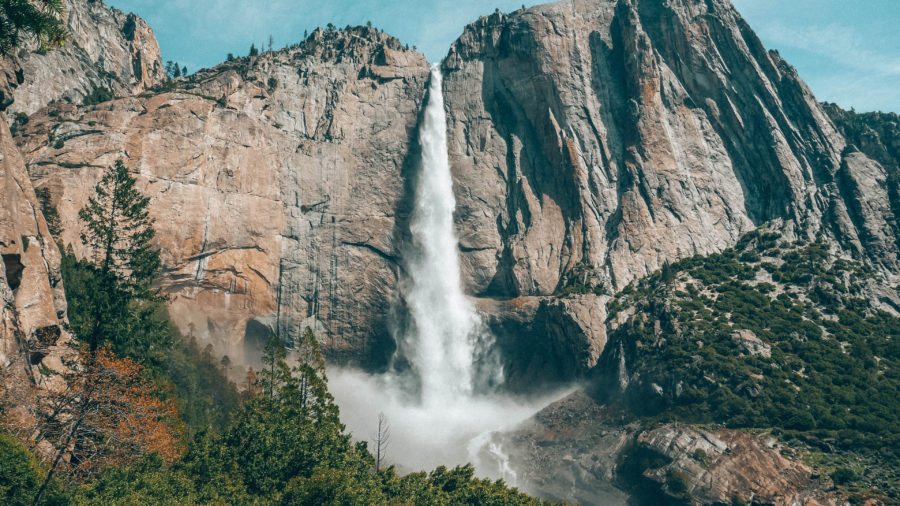
Hikers and climbers love Yosemite Park for its waterfalls, El Capitan, and Half Dome. It’s huge and might take days to explore. Most visitors go to Yosemite Valley.
Yosemite is a great park, but its proximity to the California coast and major cities and accessibility from significant population centers are downsides. Tourists, cars, and repairs and improvements for the high season were present on weekdays in spring. Like Zion National Park, travelers should park their cars and take the park shuttle buses. It would improve Yosemite Valley’s atmosphere and visitors’ delight.
Due to melting snow on mountain ridges, Yosemite Falls shines in spring. Mist prevented photographers from photographing the highest two-tiered, 2,425-foot Yosemite Falls.
The Mirror Lake Trail is a beautiful 3.73 mi valley hike to the lake with Half Dome views. The handicapped can drive on this wonderful forests and river trail.
At the other end of the valley, a short route through the forests leads to the base of the climbing mecca El Capitan Wall. From above, climbers look like ants on the 2,953-foot wall, which is virtually perpendicular. It hurts your neck to see, yet a camera’s viewfinder can’t capture it. Adam Ondra from the Czech Republic ascended its hardest route in a record eight days!
The Tunnel View on Access Road No. 41 offers Yosemite Valley’s most famous and stunning view. In a parking lot and observation deck, scores of photographers wait. No matter the season, this vista is spectacular.
8. Death Valley National Park
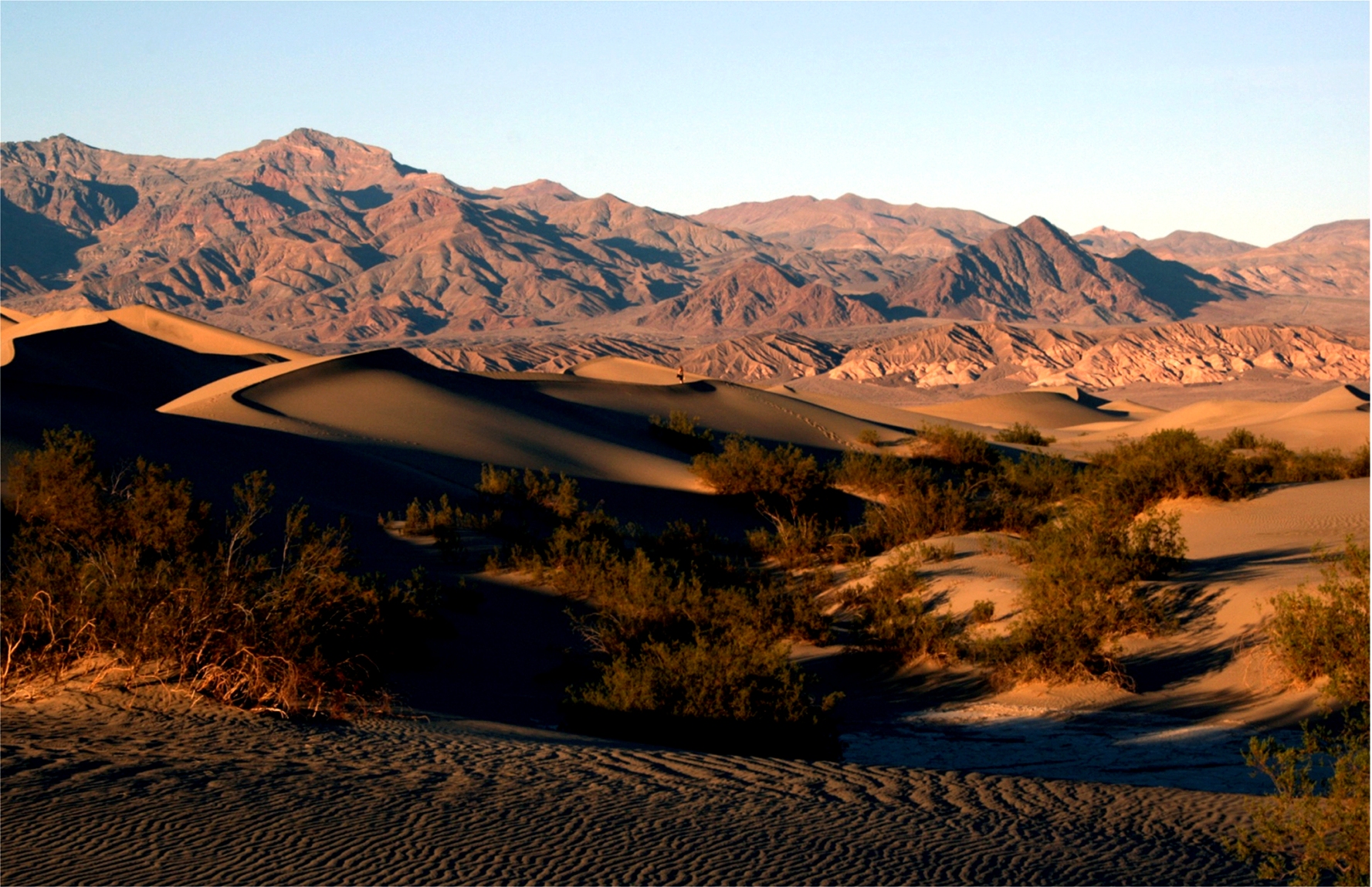
The US’s driest, hottest, and lowest point is Death Valley. This vast, lonely, and hostile desert has much to see. Long roads through the valley and salt pans are fascinating.
Zabriskie Point offers stunning views of the surrounding rock formations and terrain, especially in the morning and sunset. Dry salt pan Badwater Basin is 282 feet below sea level. The hottest summer temperature was 134°F.
Death Valley is coated in gravel and rocks, unlike other American deserts. Some areas have sand dunes.
To explore the most famous, the Mesquite Flat Dunes off Highway 190, we left before daybreak. We were shocked by how far we had come from the parking lot during our barefoot trek, admiring and taking photos of the dunes.
One of the most profound Death Valley experiences was watching the sunrise from the dunes, the wind-rippled sand play of light and shadow, and the tracks of desert fauna.
9. Sequoia National Park

We’ve all heard of these massive trees, but seeing them is amazing. These 328-foot-tall, nearly 3,000-year-old behemoths are so large you could live inside them. Gather 20 buddies, clasp hands, and create a circle to wrap your arms around the largest. Giant sequoias.
Sequoias are exclusively found on Sierra Nevada ridges in Kings Canyon and Sequoia National Parks. These two parks are close, and most Giant Forest paths are easy and short. The short Big Tree Trail in Sequoia Park circles a mountain meadow full of redwoods and the world’s tallest tree, General Sherman.
Kings Canyon has the second-largest tree, General Grant. A road runs through both parks, and as is common in the US, major landmarks are well-marked.
10. Ancient Bristlecone Pine Forest
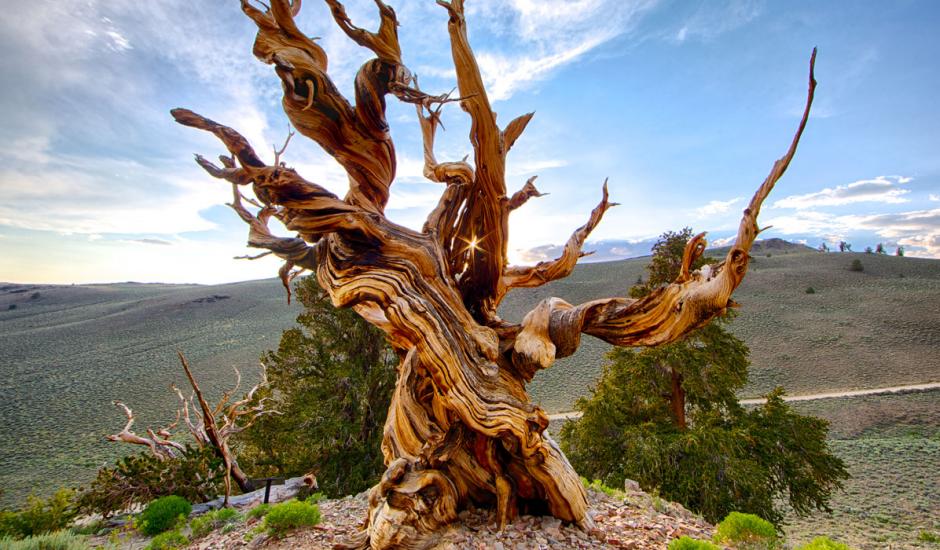
The Ancient Bristlecone Pine Forest, east of the Sierra Nevada, is less well-known and visited.
Longleaf pines, the oldest living organisms, make this place remarkable. Methuselah, the oldest, is 4,800 years old.
Some trees are dead, but others are living and resemble grand bonsai. Nature enthusiasts should visit this park. Even Mount Whitney, the tallest peak in the U.S. (outside of Alaska), and the Sierra Nevada Mountains’ panoramic views are worth the trek.











